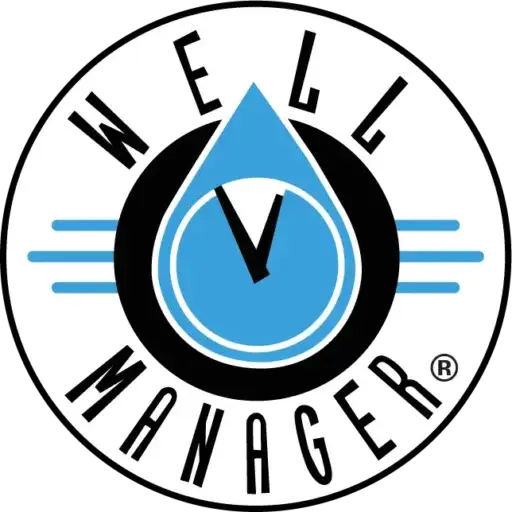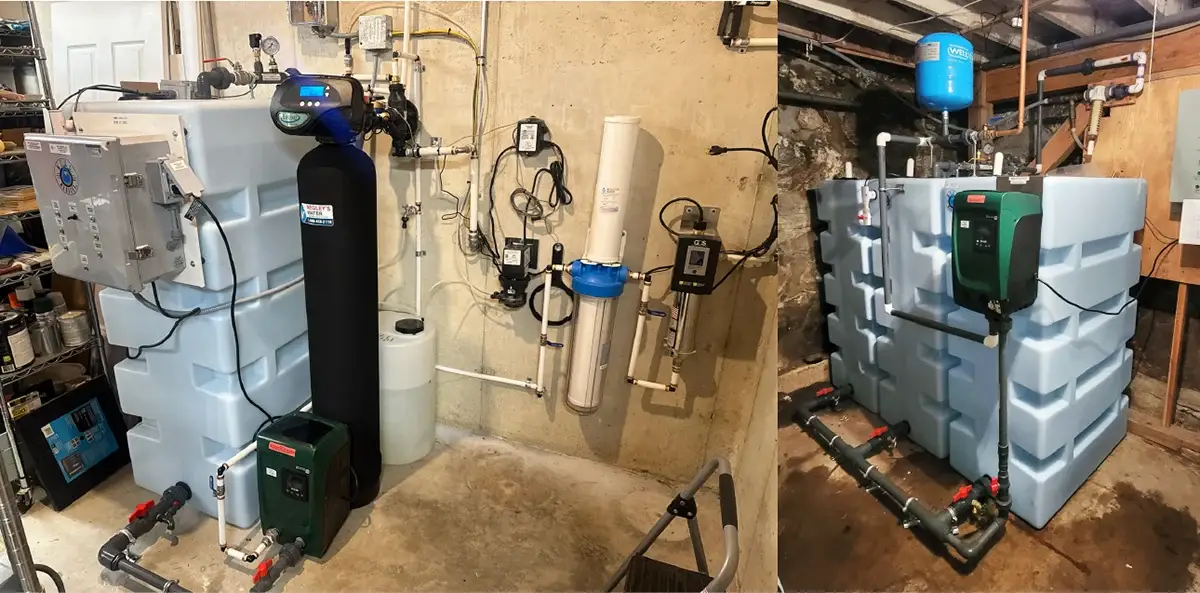A new home in the country can feel like freedom with more space, quieter, and often, your own private water supply. But for many buyers, that independence comes with a new kind of responsibility. The water pressure feels different. There’s a tank or two in the basement, maybe a small control panel humming near the wall, and a system label that reads Well Manager.
That label is a good sign. It means the property already has technology designed to handle wells with limited yield. But before you close, one question matters most: How do you ensure the system you’re inheriting delivers reliable water pressure and long-term performance?
The answer lies in understanding how the system works, how to verify its condition, and how to maintain it so you never face low water pressure or unexpected failures down the road.
How a Well Manager System Works
In a traditional well, the submersible pump draws water directly into a pressure tank and sends it through household plumbing. A Well Manager system adds a water storage tank that fills slowly at the well’s natural yield. The Well Manager® system collects water from the well on time and stores it in a potable water storage tank — our systems are not built on cisterns. Cisterns are typically buried underground or used for outdoor rain collection. While someone could purchase a Well Manager® Modular Kit and make it onto a cistern, we do not manufacture our systems for cisterns. A booster pump then draws from that stored water to supply the house at steady, city-like pressure.
Check Storage Capacity and Condition
Storage is the heart of a Well Manager system. Inspect the water storage tank for cracks, corrosion, or missing covers, and confirm that the capacity meets your household’s needs. Note: Use “water storage tank” rather than “cistern” throughout for accuracy. Penn State Extension recommends about 100 gallons of storage per person, enough to handle peak demand when the well can’t keep up.
Ask for documentation on when the tank, floats, and valves were installed. Tanks often last decades, but if the storage tank is more than twenty years old or shows deterioration, plan for future replacement. Ensure that the lid seals properly to keep out insects and surface runoff.
Evaluate the Well’s Yield and Water Quality
Before closing, arrange a professional well yield test. The University of Rhode Island’s Water Quality Program explains that safe yield is measured by pumping the well and observing how quickly the water level drops and recovers. Wells producing under three to five gallons per minute are considered low-yield and rely heavily on stored water.
Request recent yield test results, water analysis reports, and any service records. The Arizona Cooperative Extension advises disinfecting and retesting wells whenever pumps or tanks are replaced. Test for common contaminants such as nitrates, coliform bacteria, and arsenic, and repeat testing annually after purchase.
If the well’s yield is marginal, make sure the cistern and booster are large enough to cover peak demand, or discuss upgrades with a licensed contractor before moving in.
Inspect Pumps, Tanks, and Controls
A Well Manager system typically includes two pumps: the submersible well pump that fills the storage tank and the water pressure booster that serves the home. All Well Manager® Systems include one pump, unless additional pressure or capacity is required. In that case, a property may have two pumps and a dual on/off pressure setup. Most wells already have their own submersible pump, which we do not replace. Maintaining the health of the well pump is critical — our systems are designed to work with it and keep it running healthier for longer. We control the well pump through the Well Manager system’s pressure switch/tank rather than operating independently.
Each pump has a limited service life. According to Penn State Extension, pump failures often involve worn bearings or impellers and are expected after 10 to 15 years of use. Check that the booster pump operates smoothly, with no vibration or unusual noise. Please verify that the pressure tank holds its charge and does not short-cycle, a common cause of premature pump failure noted by InspectAPedia. Our more recent Well Manager systems use DAB pumps, which feature built-in dry-run protection and other safety mechanisms that extend equipment life. Review the control panel for clean wiring, active indicator lights, and watertight seals. Faulty floats or sensors can cause overflows or dry-run conditions, which shorten pump life.
If records are missing, budget for a complete system inspection and, if needed, pressure tank replacement.
You’ll never have to ask “how to increase water pressure?”
Maintenance and Documentation
Every well system depends on consistent upkeep. Keep or request the following from the seller:
- Original manuals and wiring diagrams.
- Installation and replacement dates for each major component.
- Annual water-quality results and well disinfection logs.
- Service records for pumps, switches, and tanks.
The University of Arizona recommends grading the land around the well to divert runoff, securing the well cap, and avoiding storage of chemicals or fuel nearby. Testing water once a year—and after any repair—helps prevent contamination and confirms that pressure and yield remain stable.
Passing these records to future owners maintains both value and reliability.
A Real-World Example of a Low Water Pressure Well We Fixed
Imagine a family buying a home with a Well Manager system that includes a 300-gallon water storage tank. Most of our Well Manager systems are built with 210-gallon tanks or dual 210s (420 total), depending on need. While older systems or those with re-used plumbing may vary, it’s better to describe storage in terms of system capacity rather than exact tank size, since each home’s configuration differs.
At peak morning demand, four people might use 400 gallons over two hours. The well provides 240 gallons in that time, while the storage tank supplies the remaining 160 gallons. Our systems automatically refill throughout the day and overnight, keeping the tank continually replenished. We generally recommend a total storage of around 400 gallons or more to prevent depletion during heavy use.
If that same home had only 150 gallons of storage or a one-gallon-per-minute well, pressure would drop quickly. In such cases, adding storage or upgrading the booster pump is the most practical way to increase water pressure without drilling deeper. Differences in healthy yield, storage size, and system type (Well Manager® vs. Well Watcher®) can significantly affect overall performance.
Special Considerations for Homebuyers
Be cautious if the system barely meets demand or if the well yield is below one gallon per minute. Well Manager® Systems can perform effectively with wells yielding as low as ¼ gallon per minute (some have been lower, though those are rare and require careful tuning). Well Watcher® systems typically work best around 1 gallon per minute or more. Older systems may need adjustment to match current well conditions.
According to Alabama Extension, deepening or hydro-fracturing bedrock wells can sometimes increase yield, but results vary and should only be done by qualified professionals. Our systems are engineered as permanent solutions — not temporary fixes. We generally do not recommend installing Well Manager® systems outdoors unless the homeowner lives in a warm climate.
If the property uses water for irrigation or livestock, verify that the water storage tank and pumps are sized for that additional load. A thorough inspection before closing can prevent costly surprises later.
Confidence for the Next Owner
Buying a home with a Well Manager system should be an advantage, not a concern. These systems are designed to eliminate low water pressure, extend pump life, and make low-yield wells behave like high-capacity ones. The key for homebuyers is due diligence: confirm the condition of storage and pumps, test yield and water quality, and keep clear records for future maintenance.
When properly maintained, a Well Manager setup provides reliable, city-quality water pressure and independence from municipal supply. Understanding how it works and planning for service keeps that reliability intact for decades to come.
Related Reading
- Signs You Need a Water Booster Pump for Your Well Water
- Will a Booster Pump Damage My Well Pump?
- What are the Differences Between Water Booster Pumps and Pressure Pumps?
- What is the Best Water Pressure Booster for a Low-Yield Well?
- Signs of a Low Water Pressure Well: How To Tell If You Have a Low-Yield Well



